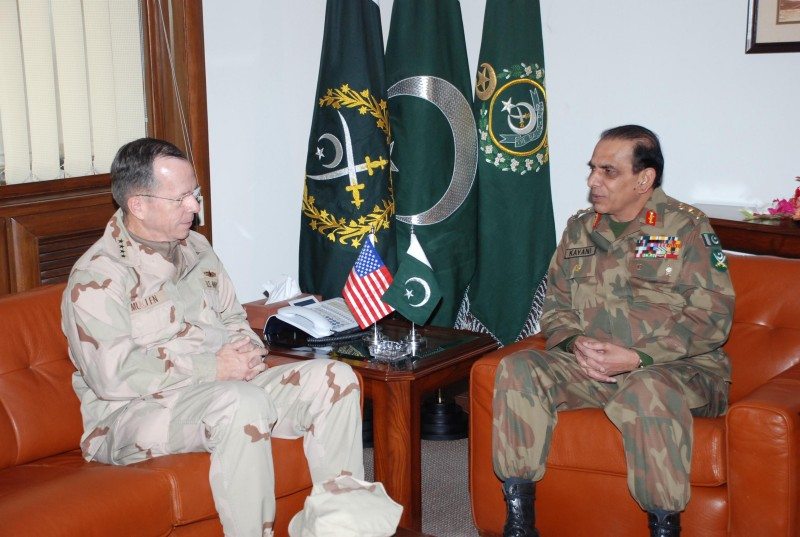Afghanistan: Cooperation between U.S. and Pakistani soldiers on both sides of the Afghanistan-Pakistan border is better than it has ever been, the chairman of the Joint Chiefs of Staff said here today.
Navy Adm. Mike Mullen told reporters traveling with him to Afghanistan and Pakistan that the Pakistani military knows the threat the Haqqani network poses in Afghanistan, but that their first focus is on the Pakistani Taliban that threatens their government in Islamabad.
But the NATO-led International Security Assistance Force, the Afghan security forces and the Pakistanis have cooperated, the admiral said.
“We have chased bad guys into their network, and [the Pakistanis] have hammered them, and vice versa,” Mullen said. This is particularly true on the border Shared by Pakistan and Afghanistan’s Khost province, he added.
Weekly video teleconferences take place across the border at the division commander level, Mullen noted, and at the tactical level messages pass back and forth across the border even during combat.
A change over the past year has applied a comprehensive approach to this battle space in Regional Command East, Mullen said, including a defense in depth from the border through the city of Khost, for example, to defend the Afghan capital of Kabul. The Haqqani network had almost a free rein in the region, the chairman said, but this has changed over the past year.
“Haqqani is having a much more difficult time now,” he told reporters. “All that said, we’re still working through the [Pakistani] military support, the way through the relationships the [Pakistani interservice intelligence agency] has with the Haqqani network, and the strain that creates.”
Mullen said he will address these concerns when he meets with Pakistani leaders later this week.
Although the United States has been in Afghanistan for 10 years, the chairman said, only over the last 18 months has the effort been resourced correctly.
“In the past 10 years, the Taliban has grown and is a very tough force,” he said. “That’s the combat that we are in. We’re going to have very a tough year this year. I’ve been very straight with the American people on that. I think our losses, which were significant last year, will be significant this year as well.”
Still, Mullen added, it was a tougher year on the enemy.
“The Taliban had a really tough year last year, and will have a tougher one this year,” he said. “I think we’ll know a lot more as to where this all stands … at the end of this fighting season.” The fighting season typically runs from spring through the end of September or early October, when colder weather closes in.
ISAF has rooted the Taliban out of the safe havens they had in Afghanistan’s south and southwest, where the main effort in the country has been — an effort that was marked by tough fighting in and around Kandahar and Helmand provinces.
“What I’ve seen in the east is we now have a strategy in place that is much more comprehensive,” Mullen said. “We’ve all known Haqqani, in particular, is the heart of the problem in supporting the Taliban and sending fighters into Afghanistan, and we think we are in much better shape with respect to making it much more difficult for the Haqqanis this year.”










